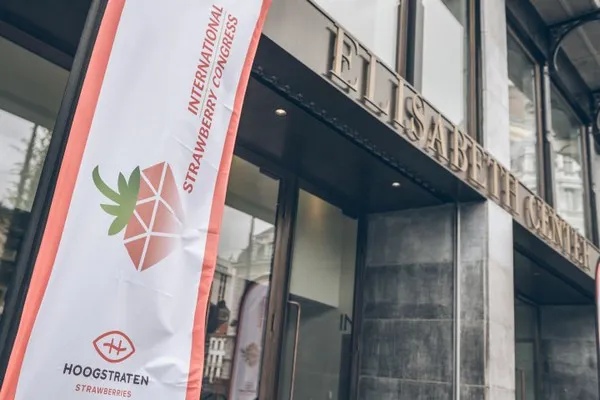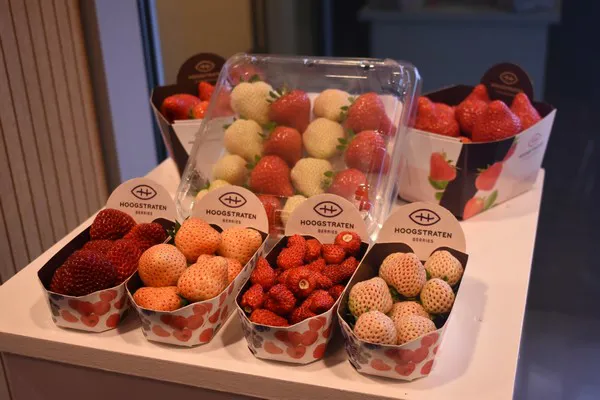Like many other categories, the strawberry sector is struggling. That was evident at the "International Strawberry Congress," held in Antwerp, Belgium, from September 21 to 24. Supply is limited, and prices are high. According to many, that will not change anytime soon this winter. On the contrary, it will create even more challenges. That was the conference speakers' general message.
Cindy van Rijswick (Rabobank)
Speaking to the traders made one thing clear: Uncertain times await everyone in the strawberry world. Speaker Cindy van Rijswick, Senior Specialist Fresh Produce at Rabobank, concurs. "There are tremendous challenges in the normally stable strawberry market, particularly on the supply side. Cultivation prices are rising before our eyes. Fertilizer is becoming increasingly pricey, and energy costs are skyrocketing."
"The more expensive but scarce labor force isn't making things any easier either." Also, the "Green Deal" hangs like the sword of Damocles over many growers' heads. This goal is to be commended, says the Belgian Horticultural Association (VBT) secretary Luc Vanoirbeek, provided it is done in an affordable, fair, realistic way. Cindy characterizes the market situation as a "perfect storm."

She adds that the number of growers in, especially lit cultivation, is declining sharply. "The sky-high energy costs mean, this winter, many are choosing not to or to plant later. That will lead to substantially less supply on the market," says Cindy. Jan Engelen of Coöperatie Hoogstraten (the event organizer) also expresses concern that far less, and perhaps no, local strawberries would be available this winter.
"That will automatically lead to higher prices, but that won't cover costs," Philippe Binard of Freshfel Europe explains. Growers and traders operate on extremely tight margins. Moreover, not nearly all the increased costs can be passed on to consumers. Fruit and vegetables are already considered expensive products. So, with even higher prices, you push people back toward 'bad, but cheap comfort food.'"

Added to that, things are also not great on the demand side. "Inflation and subsequently reduced purchasing power hit most consumers hard. That's why they're increasingly watching what they spend. Discounters have never been more popular, promotions are being chosen more, and house brands are winning over premium products," Cindy explains.
"During the pandemic, fruit and vegetable sales spiked, but those have since normalized again. Health is becoming less important for some. Previous crises teach us that, in tough times, shoppers fall back on 'comfort food' in difficult times. However, we hope, if prices can be kept in check, that won't happen on a large scale this time."
Tom Van Delm (Hoogstraten Research Center), Leen Matthé (Cooperatie Hoogstraten) and event chairman Michael Barker
The trend at the congress was to find ways to deal with these challenges facing the strawberry market. The overall message was one of hope and that fruits and vegetables "must be at the center of every policy decision." That's why, at the congress, much was said about opportunities and alternatives whether that is automation through autonomous greenhouses or using robots for crop protection and harvesting.
Or bringing strawberries to the public's attention differently, like via social media and influencers. The world is changing, and the market must keep pace. The international crowd agreed on and industriously discussed that at the four-day International Strawberry Congress 2022.
The photo report of the event will follow soon.
For more information:  Coöperatie Hoogstraten
Coöperatie Hoogstraten
59 Loenhoutseweg
2320, Hoogstraten, Belgium
Tel: +32 (0) 334 00 211
Email: [email protected]
Website: www.hoogstraten.eu
